Let’s break down the anatomy of an exhaust system — each component, what it does, and why it matters.
Remember the first time you talked anatomy in the classroom? Yeah—well, this discussion of anatomy probably isn’t going to be nearly as eye-opening, exhilarating, frightening, or embarrassing (or all of the above) as that conversation. But for aspiring hot rodders, the “exhaust talk” is just as important.
Why Choose Aftermarket Exhaust Components?
The factory exhaust system on your vehicle is designed to muffle sound as much as possible. This also means it restricts the flow of exhaust gases out of your engine, creating what’s called backpressure. Whisle most engines require some backpressure to operate properly, it also robs power. Essentially, the engine has to use some of the power it generates to cram exhaust gases out of the tailpipe instead of using that po s/Exhaust Manifolds
headers
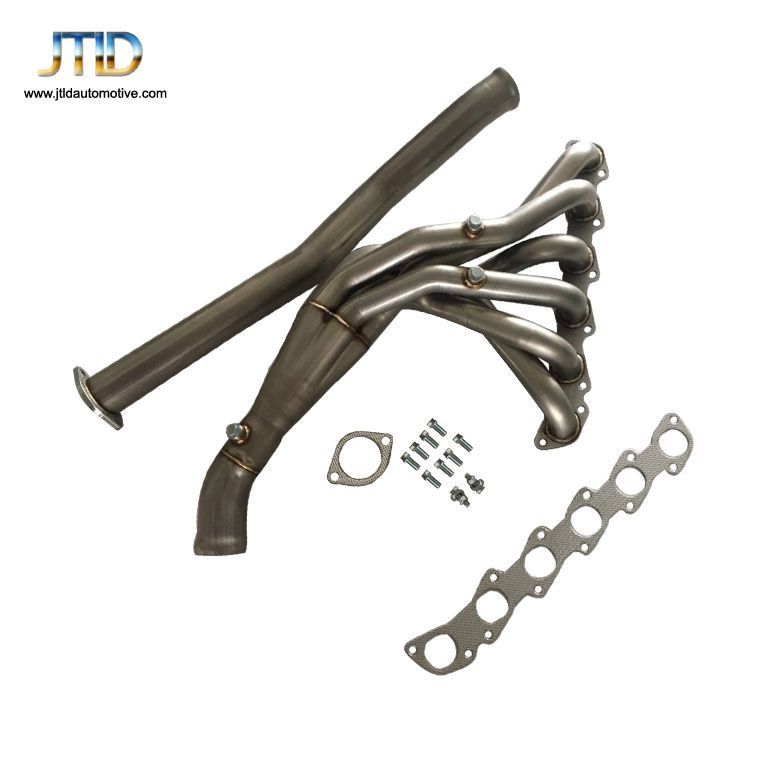
The first exhaust components to handle spent exhaust gases from your engine, headers (also called exhaust manifolds in stock form) are bolted to the cylinder heads and scavenge exhaust gases from the combustion chambers.
Aftermarket headers are typically mandrel-bent to reduce exhaust restriction, allowing the exhaust gas to move freely from the engine. This reduces power-robbing backpressure and helps build up enough exhaust flow velocity to create energy pulses that actually pull, or scavenge, spent gases from the engine.
Headers are available in full-length and “shorty” dimensions and come in multiple configurations, including Tri-Y and 4-into-1. We’ll talk more about choosing the right design for your ride in a later post.
Downpipe
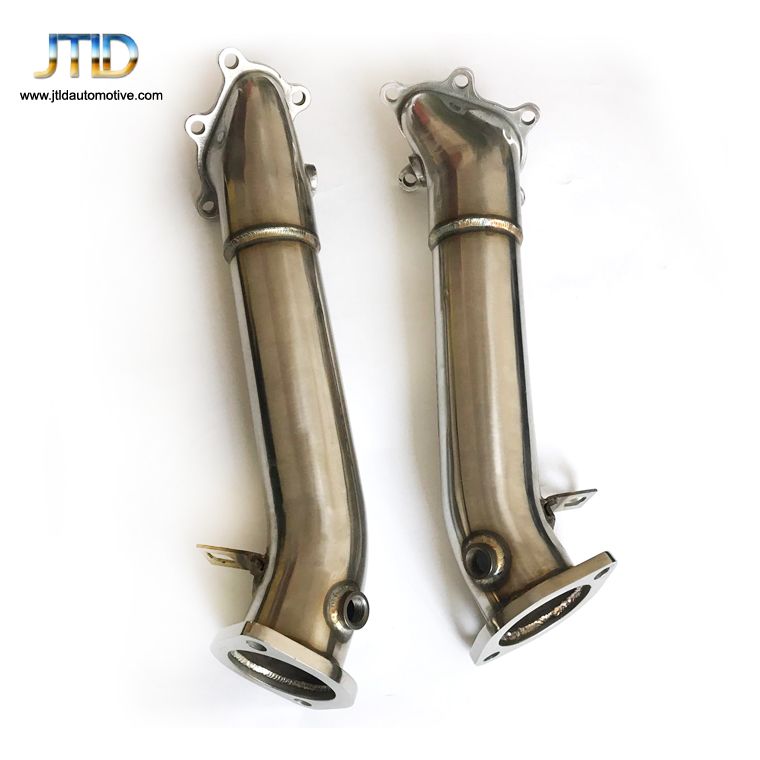
Also called head pipes, downpipe simply link the headers to the mufflers. Between these two points, a downpipe is often interrupted by the catalytic converter, depending on the application.
Muffler
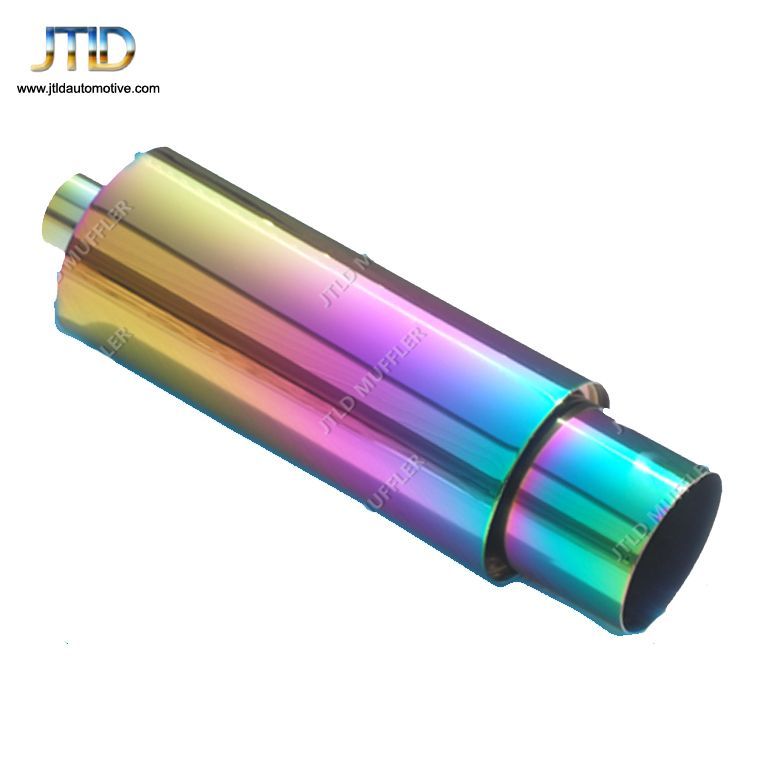
One of the most recognizable components of the exhaust system, the muffler is responsible for exhaust noise reduction. While the job description of a muffler sounds simple, the way in which a muffler performs its main task is varied and complicated.
Depending on the style, a muffler uses some combination of baffles, chambers, perforated tubes, and/or sound deadening material to achieve this goal. Muffler manufacturers configure these components in different ways to produce different exhaust tones. Ideally, an aftermarket muffler will provide a good performance exhaust tone without creating too much power-stealing backpressure.
X/Y Pipes
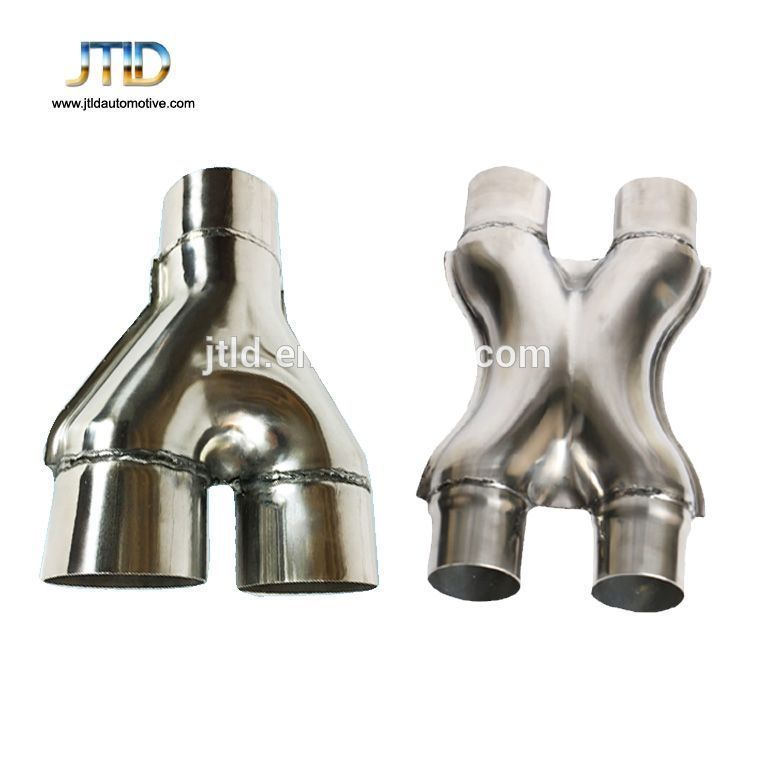
X/Y pipes are designed to balance the exhaust flow on a dual exhaust system. Typically installed near the headers, crossover pipes reduce uneven exhaust flow from the two banks of engine cylinders by giving exhaust pulses an avenue to travel between the two sides of the dual exhaust system. This reduces backpressure by preventing an exhaust build-up on either side of the system.
The two most common types of crossover pipes are X-pipes and H-pipes. As their names suggest, X-pipes are shaped like the letter “X,” and H-pipes look similar to an “H.”
TIP
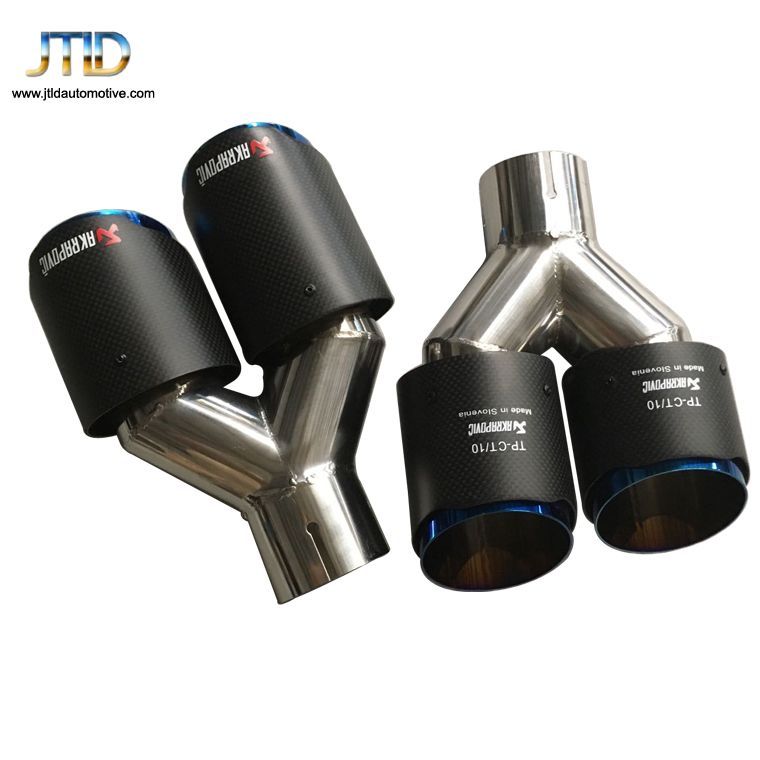
The TIP is often the last piece of the exhaust system puzzle. It runs from the muffler to the back or side of your vehicle. Many aftermarket manufacturers will finish off their tailpipes with a chrome exhaust tip or polished exhaust tip. You can also buy exhaust tips separately in your choice of finishes or shapes.
Now that you know the basic anatomy of an automotive exhaust system, we’ll help you get to second base by showing you how to choose the right exhaust for your ride.









